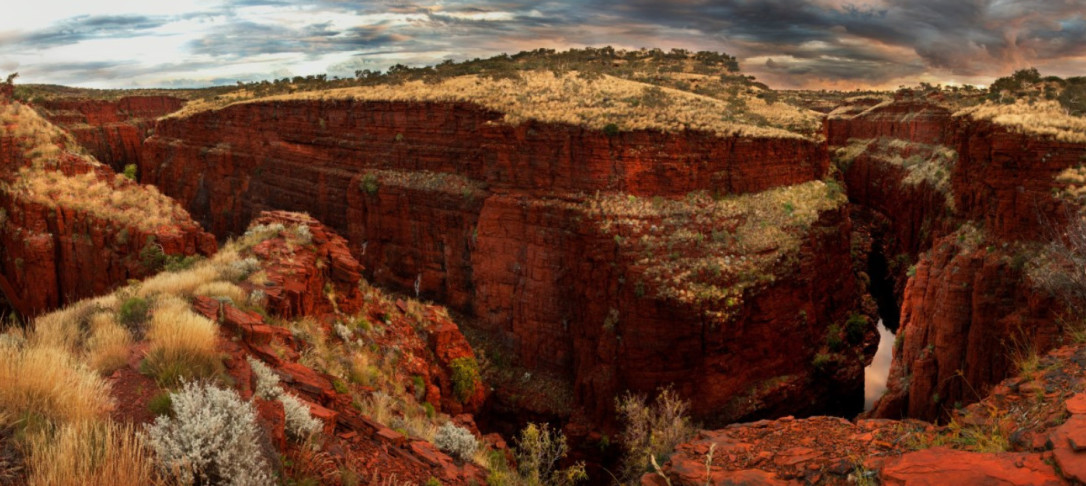
Australia is an old stable continent with a rich geological history. Limitations in sub-surface seismic imaging below the Moho, however, mean that is unclear to what extent, and to what depth, this rich geological history is expressed in the mantle. Studies of seismic anisotropy, which reflect past/present mantle deformation, can offer potential insights.

One commonly employed technique is shear wave splitting, in which the wave polarisation is measured. New such results from the BILBY array, a linear transect of seismic stations that crossed the Australian continent from north to south, reveals a pattern of anisotropy that is consistent with past deformation of the Australian lithosphere that has been preserved for over 300 million years.
Another informative technique is to use scattered surface waves, called Quasi-Love waves, that can detect lateral gradients in seismic anisotropy. The first such study for the region finds that scatterers are preferentially located near (1) the passive continental margins, and (2) the boundaries of major geological provinces within Australia. Such lateral anisotropic gradients within the continental interior imply pervasive fossilized lithospheric anisotropy, on a scale that mirrors the crustal geology at the surface.
Beneath the continental margins, lateral anisotropic gradients may indicate small-scale dynamic processes in the asthenosphere, such as edge-drive convection, that are tied to the margins.
Biography
Caroline completed her MSci in Geophysics here in the Department before crossing the pond to undertake her PhD at Yale University. Following a postdoctoral fellowship at the National Oceanography Centre in Southampton (2015-2016) Caroline joined the faculty of the Research School of Earth Sciences at Australian National University, where she is currently a Senior Lecturer and ARC DECRA Fellow. Her primary research interests are in observational seismology and geodynamics, particularly in combining them to investigate plate tectonic processes. In particular she uses seismic anisotropy to investigate patterns of mantle flow, applying this technique to a variety of tectonic settings, on both regional and global scales, from subduction zones, to mid-ocean ridges, to the Australian continental interior.


